- Home
- Laurie R. King
A Study in Sherlock Page 8
A Study in Sherlock Read online
Page 8
Hilton Cubitt was sprawled on the floor, staring at the ceiling with dead eyes. There was a bullet hole in his forehead. Ronald stared, transfixed by the grisly scene. Then William Escott’s shout jerked him out of his trance.
“It’s gone!”
Ronald followed Escott’s pointing finger and found himself staring at an empty easel. The Paget was missing.
Ronald was shaken by the sight of Cubitt’s corpse. While Phillip Lester called the police, he returned to his room and collapsed in the chair by the window. Ronald had confronted death every day while he was developing Death’s Head. His digital victims had been stabbed, decapitated by chain saws, riddled with machine gun bullets, and fed to sharks. His game contained a copious amount of animated blood that flowed and spouted from hundreds of grisly wounds, but nothing he’d dealt with in the world of his video game had prepared him for the sight and smell of real death.
Ronald wanted nothing more than to be allowed to run home to the safety of his penthouse, but he knew he was going nowhere until he had spoken to the police. That prospect was unnerving, but not nearly as unnerving as the realization that the person who had murdered Hilton Cubitt was probably near enough to kill again.
Inspector Andrew Baynes had been dispatched to Cubitt Hall as soon as Hilton Cubitt’s death had been reported by Phillip Lester. He was six feet tall with thinning black hair and a wiry build. After organizing the crime scene and making certain that his forensic experts were hard at work in the gallery, Baynes had Ronald Adair, Peter Burns, Robert Altamont, William Escott, and Phillip Lester escorted into the library.
The inspector studied them as they filed into the room. Baynes was an exercise fanatic and something about the short, fat Texan repulsed him. Maybe it was the smirk on Escott’s face or his nonchalance in the middle of a murder investigation or the fact that he had not shaved and was dressed in a maroon track suit, but Baynes was certain he would not like the man.
The butler was all business. He was dressed in a suit and tie and had been extremely helpful from the beginning.
Peter Burns was also dressed in business attire and limped in using an elegant cane. It was clear that walking was a chore for him. The rare book dealer being the tallest of the five men, the inspector could look him straight in the eye. Burns didn’t flinch under Baynes’s intense scrutiny, but returned the inspector’s stare without blinking.
Ronald Adair looked impossibly young to be as rich as he was rumored to be but he also looked very nervous.
Finally, there was Robert Altamont, who entered the room cautiously and looked ill at ease.
After having the men sit in the seats they had taken the night before, Baynes asked them to explain why they were at Cubitt’s manor house. Then he asked Phillip Lester to tell him about the discovery of the body.
“And no one heard a shot?” the inspector asked when Lester was through.
“That’s not surprising, sir,” the butler said. “Mr. Cubitt’s art collection is very valuable and the gallery was constructed like a vault. The doors are thick steel and the walls are also steel lined. The room is quite soundproof.”
“Did any of you hear anything that might be useful?” the inspector asked.
Ronald hesitated. Then he raised his hand timidly.
“Yes, Mr. Adair?” Baynes prompted.
“I didn’t hear anything, but … Well, I was so wound up by Mr. Cubitt’s revelation that I couldn’t sleep. So I read in a chair by the window in my bedroom in hopes that I would grow tired. At some point I started to yawn so I closed my book and turned out the lamp. That’s when I saw something on the moor.”
“Something?”
“I couldn’t make it out. Whoever it was had a light of some sort because that’s what attracted me.”
“What time was this?” the inspector asked.
“I can’t say with certainty but I began reading a little after midnight and probably continued for half an hour to forty-five minutes. I never looked at my watch.”
“So sometime around one in the morning?”
“That would be a good guess.”
“We’ll see what the medical examiner has to say about time of death but you may have seen our murderer if he puts it in that neighborhood.”
“Unless Adair is making up this ghostly apparition on the moor,” Escott said. “It sounds like something out of The Hound of the Baskervilles.”
“I assure you this is no fabrication,” Ronald snapped, “and you’ve some nerve to suggest that it is.”
“Take it easy, Adair,” Escott answered. “No need to get excited unless you have a guilty conscience.”
“Call me a liar again and you’ll see how excited I can get.”
“Gentlemen,” Baynes cautioned sternly. “I insist that you calm down.”
Ronald and Escott glared at each other but they held their tongues.
“Can someone explain why this stolen drawing is so important?” Baynes asked. Then he listened intently while Peter Burns related the background of the missing Paget.
“And it’s valuable?” the inspector asked when Burns was through.
“Very,” Burns answered.
“What does that mean?”
“The Paget is the rarest piece of Holmes memorabilia in existence and would fetch several million dollars at auction.”
Baynes whistled. “Now that’s a motive for murder. But I have a question for you, Mr. Burns. If this painting—”
“Drawing, Inspector,” Burns corrected.
“Right, drawing is so unique, why was Mr. Cubitt selling it?”
“He said he had collected everything he could of Holmes and wasn’t interested anymore,” Altamont said.
“Actually,” Burns said, “Mr. Cubitt wasn’t completely honest about his motive. His fortune had taken quite a hit lately and he was forced to sell off his collection. I tried to talk him out of it but his back was to the wall.”
“What are you doing to find the Paget?” Escott demanded. “I’m still ready to bid if the thing is real.”
“Can’t you wait for Hilton to be buried?” Altamont asked with disgust.
“No one will be able to do a thing with Cubitt’s estate until it’s probated,” Ronald said.
“You should search the help. One of the servants probably took it,” Escott said.
“That may not be the case,” Inspector Baynes said. “Mr. Lester has informed me that the cook, maids, and serving staff were dismissed after dinner. They all live in the village and were gone long before Mr. Cubitt was murdered. The security men room together in a cottage behind the house and they say that neither of them left the cottage last night. The drivers who brought you from Heathrow are rooming above the garage and they alibi one another. They also say that none of their cars left the house last night and no one saw a car leave after the last of the staff drove off.”
“Are you looking for the drawing?” Altamont asked the inspector.
“I’ve got my men searching the house. If we find the Paget we may find the murderer.”
“The drawing may not be in the house,” Ronald said. “If no one drove away after the murder then the Paget must be close at hand, which means it is either in the house …”
“Or somewhere on the moor where your phantom stashed it,” Baynes said.
Ronald’s brow furrowed. “I’ve just had a very troubling thought,” he said. “If the staff, the drivers, and the security men are accounted for, the killer has to be one of us.”
Baynes nodded. “My thought exactly. Do any of you have alibis?”
The men looked at one another. Then all of them shook their heads.
“Something just occurred to me, Inspector,” Robert Altamont said.
“Yes, Mr. Altamont,” Baynes said.
“Peter, Bill, Ronald, and I may not have alibis but none of us could have committed the murder.”
“Why do you say that?”
“Hilton was shot to death.”
Baynes nodded.
“Then we couldn’t have killed him. When we arrived, Hilton’s security men searched us and our luggage. None of us had a gun on him or in his bags.”
“An interesting point,” Baynes conceded.
He turned to the butler. “Mr. Lester, are guns kept in the manor house?”
“Yes, sir. I have a pistol and so do the members of the security team. Then there are hunting rifles.”
Baynes sighed. “All right, I’ll have one of the boys from the lab go with you. I want every gun accounted for and tested. And I guess I’d better send a search party onto the moor. Will someone please describe the drawing?”
Phillip Lester had set out tea and snacks in the dining room and Inspector Baynes and Ronald bumped into each other there.
“Have you found anything?” Ronald asked. The inspector shook his head.
“We’ve searched all over Cubitt Hall and the moor and we haven’t found the Paget or the murder weapon. And none of the guns Mr. Lester turned over could have fired the shot that killed Mr. Cubitt. Unfortunately, there are a number of bogs and sinkholes on the moor into which the murder weapon and the drawing could have been dropped. If the murderer disposed of them there we have no chance of recovering them.”
“The killer may have disposed of his weapon on the moor,” Ronald said, “but he’d never leave the Paget there.”
“What makes you say that?” Baynes asked.
“Sequestering the Paget on the moor would risk exposure to the elements and damage to the drawing. I would never take that gamble.”
“You might if discovery of the drawing could lead to your incarceration for life for murder.”
“You’re not a collector, are you?”
“No, sir.”
“Then it will be impossible for you to understand the reverence we collectors have for objects we desire. Trust me, Inspector, that drawing is not on the moor. It is somewhere in this house, unless …”
Ronald’s brow furrowed. Then his eyes widened and he whispered, “Oh, my God!”
“What are you thinking?” Baynes asked.
Ronald turned to the inspector. “Have you recovered the bullet that killed Hilton?”
“Yes.”
“Is it a soft-nosed revolver bullet that mushroomed on impact?” Ronald asked.
Baynes’s mouth gaped open. “How did you know that?”
“Elementary, my dear Baynes,” Ronald answered with a wide smile.
“Huh?”
“Sorry, I couldn’t resist. I need one more piece of information and I’ll be able to tell you who killed Hilton Cubitt and the location of the Paget.”
Altamont and Escott protested at having to spend another day at Cubitt Hall but Inspector Baynes insisted. He had phoned an urgent request to police contacts in the States. Baynes received the information he needed just after dinner and gave it to Ronald Adair. Half an hour later, Baynes had Escott, Lester, Burns, and Altamont rounded up and brought to the library where they took their places, once again.
“I wish I could take credit for cracking this case,” Baynes said, “but the honor belongs to Mr. Adair. So I’m going to let him tell you what he figured out.”
The others cast suspicious glances at Ronald as he stood and took his place next to the inspector.
“It was the bullet that killed Mr. Cubitt that led me to the solution to this puzzling mystery. Hilton was killed with a revolver bullet. I asked the inspector if it was soft nosed and had mushroomed on impact. He confirmed this fact.”
Ronald noticed that Altamont’s brow furrowed first and Escott’s a moment later.
“Does that description sound familiar, gentlemen?” Ronald asked his fellow Baker Street Irregulars.
“ ‘The Adventure of the Empty House,’ ” Escott blurted out.
“Exactly, Bill. In that story, Colonel Sebastian Moran tries to assassinate Sherlock Holmes with an air gun. The weapon was constructed for Professor Moriarty, Holmes’s archenemy, by Von Herder, a blind German mechanic. In the story, Doyle writes that ‘the revolver bullet had mushroomed out as soft-nosed bullets will.’ ”
“You’re saying Cubitt was killed with an air gun?” Altamont asked incredulously.
“Something like it,” Ronald answered.
“But you were all searched,” Lester said. “How was the gun brought into the house?”
“No one searched you,” Escott said.
Ronald laughed. “No, no, Bill. The butler didn’t do it. The weapon used to kill Hilton Cubitt was concealed in Peter Burns’s cane.”
Burns looked astonished. “I don’t know whether to laugh or get angry, Ronald.” He held out his cane. “Feel free to inspect this as much as you wish. I assure you it’s quite solid.”
“Oh, I don’t doubt that. What I do doubt is that the cane you are using is the same one you carried on the evening we arrived at Cubitt Hall. I am exactly five foot eleven and you are taller, but when we met outside the front door I looked directly into your eyes because you had to bend down to lean on your cane.”
Burns looked puzzled. “Where is this going?”
“Inspector Baynes is six feet tall, Peter. When we were first questioned in the library I noticed that you were eye-to-eye with the inspector, but it didn’t dawn on me that this might be important until I realized that Hilton Cubitt was murdered with a variant of an air gun. That’s when I realized that there had to be two canes and the one with the concealed gun was shorter. I’m guessing that the real cane was concealed in the lining of your duffel bag.”
Burns looked completely befuddled. “I don’t know what to say. If the gun was in a phony cane I brought here, where is it now?”
“Buried in a bog in the moor along with the Paget,” Ronald answered.
“My God, Ronald, are you insane? I would never destroy that drawing.”
“You would if it was a fake. Bill, Robert, and I have more than enough money to have bought the Paget if it was real. We would have no reason to steal it. And if we did, we would know that our luggage would be searched when we left so we couldn’t get it out of the house. And we would never leave it outside on the moor where it would be prey to some of the world’s most foul weather.
“But none of us would have any compunction about destroying a fake Paget. And that is what you sold to Hilton. He depended on you to verify its authenticity before paying millions to your accomplice, Chester Doran.
“You and Doran assumed that Hilton would keep the Paget in his collection and that he wouldn’t tell anyone about it. If the British government learned that Hilton had a Paget that was stolen from Buckingham Palace, it would demand its return. Cubitt assumed we would ignore the moral implications of obtaining stolen goods in our desire to obtain the most important and rare piece of Holmes memorabilia that ever existed, but you couldn’t take the chance that we would make the existence of the Paget public.
“Hilton suffered huge financial losses and needed large sums of money fast. You must have been terrified when he told you he planned to sell the Paget. Even if the buyer decided to keep its existence secret you knew he would insist on independent verification of an object that valuable and you would be exposed. You didn’t steal the Paget to possess it. You stole it to destroy it.”
“Well, this is an interesting theory but you don’t have this so-called air gun or the Paget so all you do have is a theory.”
“Not quite,” Inspector Baynes chimed in. “The New York police have Chester Doran in custody and he has been granted immunity as part of a plea bargain. When he heard he could be an accomplice to murder it wasn’t hard to get him to cooperate. He’s told us everything.
“Mr. Burns, I am placing you under arrest for the murder of Hilton Cubitt.”
William Escott and Robert Altamont drove back to London as soon as Inspector Baynes released them but Baynes asked Ronald to walk with him on the moor. Ronald explained his reluctance to go anywhere near the treacherous bogs but the inspector assured him it was perfectly safe.
; Ronald and the inspector set off along a marked path. As they walked Ronald began to see that the moor could be scary but there was also a tranquil beauty in the lush vegetation and a sense of awe that was evoked by the cold, gray, mist-shrouded, low-hanging sky.
“Before you left, I wanted a chance to tell you how impressed I was by your deductions,” the inspector said. “You’ll probably have to testify at Burns’s trial. When you return to England, perhaps you’ll assist the Yard in solving another case.”
Ronald gave a self-deprecating laugh. “I doubt I’d be much use unless the case was connected to Sherlock Holmes. If Doyle hadn’t had Colonel Sebastian Moran use an air gun in ‘The Adventure of the Empty House,’ I’d never have tumbled to Burns’s scheme.”
“Then I’ll keep an eye out for a case with a Doyle connection.”
A stiff wind slashed Ronald’s cheeks. He hunched his shoulders and looked nervously at his fog-shrouded, bog-infested surroundings.
“I’ll think about it, but don’t call me if the case involves a bloodthirsty beast and the moor.”
Jerry Margolin is the owner of the world’s largest collection of original cartoon art and illustrations dealing strictly with Mr. Sherlock Holmes. Jerry lives in Portland, Oregon, with his wife of forty years and a cat named Paget. He has been a member of the Baker Street Irregulars since 1977. His brother and coauthor, Phillip Margolin, introduced him to Sherlock Holmes at age ten.
Phillip Margolin has been a Peace Corps Volunteer, a schoolteacher, and is the author of fifteen New York Times bestsellers. Phil spent a quarter century as a criminal defense attorney, during which time he handled thirty homicide cases, including twelve death penalty cases, and argued before the United States Supreme Court. He lives in Portland, Oregon, and is proud to be a cofounder of Chess for Success, a nonprofit that uses chess to teach elementary school children study skills. When asked to contribute to this anthology, Phil jumped at the chance to collaborate on a Holmes story with his brother.
The resemblance of any of the characters in this story to any living or dead Sherlockians is probably intentional.

 O Jerusalem
O Jerusalem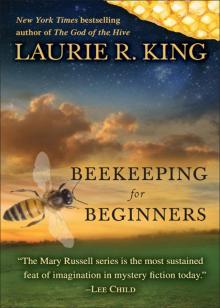 Beekeeping for Beginners
Beekeeping for Beginners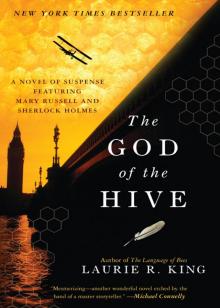 The God of the Hive
The God of the Hive The Language of Bees
The Language of Bees Night Work
Night Work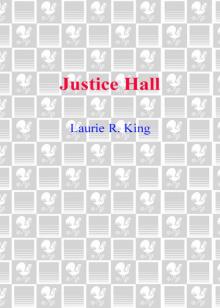 Justice Hall
Justice Hall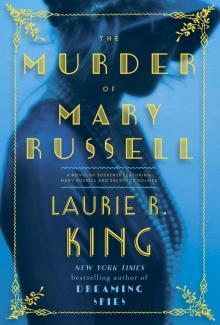 The Murder of Mary Russell
The Murder of Mary Russell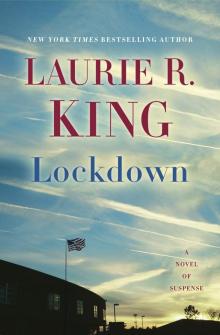 Lockdown
Lockdown To Play the Fool
To Play the Fool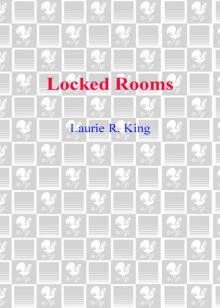 Locked Rooms
Locked Rooms Island of the Mad
Island of the Mad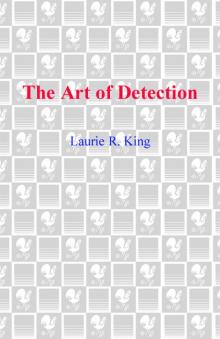 The Art of Detection
The Art of Detection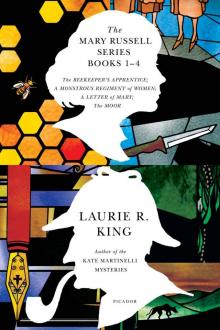 The Mary Russell Series Books 1-4
The Mary Russell Series Books 1-4 The Beekeeper's Apprentice
The Beekeeper's Apprentice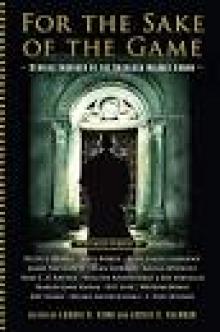 For the Sake of the Game
For the Sake of the Game A Darker Place
A Darker Place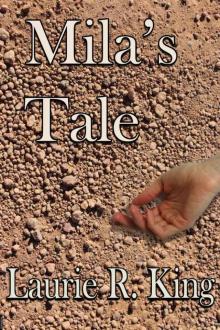 Mila's Tale
Mila's Tale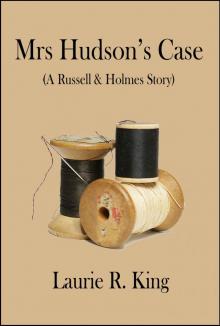 Mrs Hudson's Case
Mrs Hudson's Case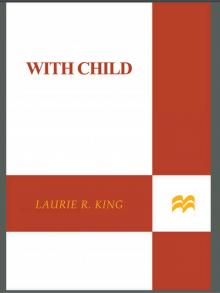 With Child
With Child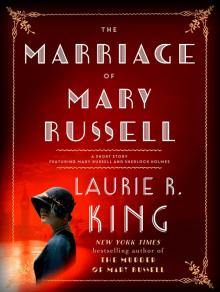 The Marriage of Mary Russell
The Marriage of Mary Russell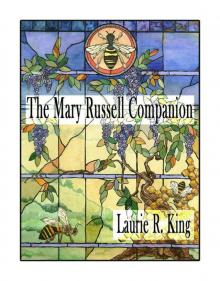 The Mary Russell Companion
The Mary Russell Companion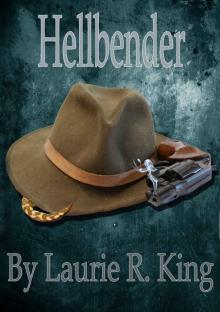 Hellbender
Hellbender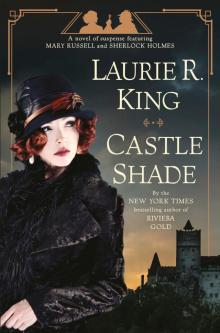 Castle Shade
Castle Shade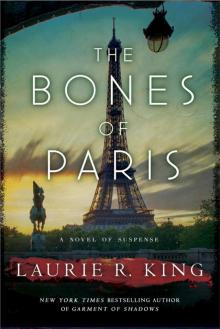 The Bones of Paris
The Bones of Paris Riviera Gold
Riviera Gold A Grave Talent
A Grave Talent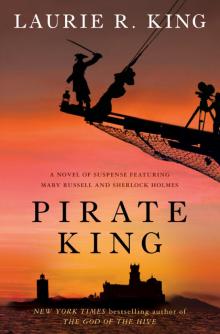 Pirate King
Pirate King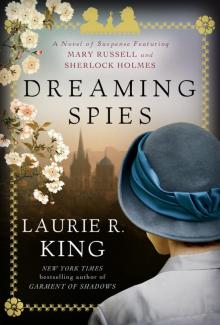 Dreaming Spies
Dreaming Spies Folly
Folly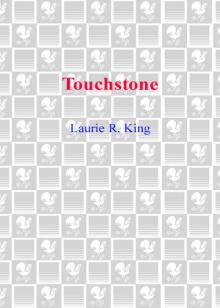 Touchstone
Touchstone The Game
The Game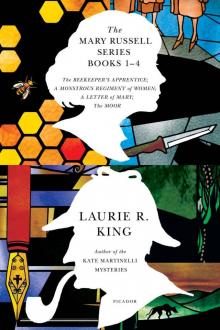 The Mary Russell Series Books 1-4: The Beekeeper's Apprentice; A Monstrous Regiment of Women; A Letter of Mary; The Moor
The Mary Russell Series Books 1-4: The Beekeeper's Apprentice; A Monstrous Regiment of Women; A Letter of Mary; The Moor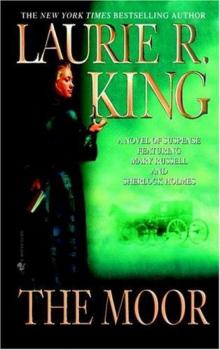 The Moor mr-4
The Moor mr-4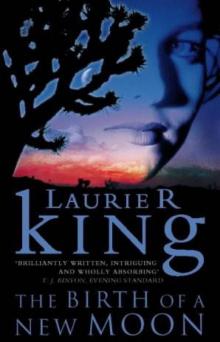 The Birth of a new moon
The Birth of a new moon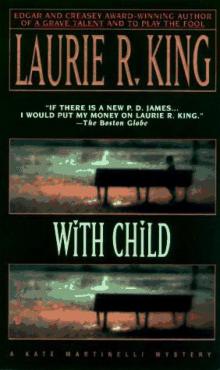 With Child km-3
With Child km-3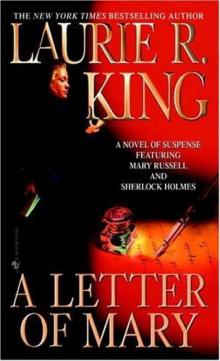 A Letter of Mary mr-3
A Letter of Mary mr-3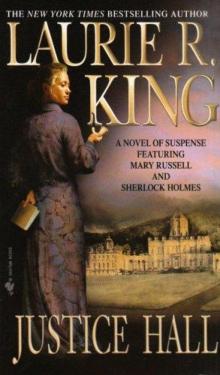 Justice Hall mr-6
Justice Hall mr-6 Pirate King: A novel of suspense featuring Mary Russell and Sherlock Holmes
Pirate King: A novel of suspense featuring Mary Russell and Sherlock Holmes Pirate King: A novel of suspense featuring Mary Russell and Sherlock Holmes mr-11
Pirate King: A novel of suspense featuring Mary Russell and Sherlock Holmes mr-11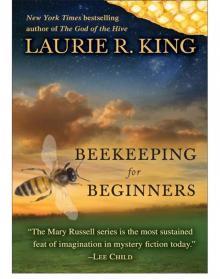 Beekeeping for Beginners (Short Story)
Beekeeping for Beginners (Short Story)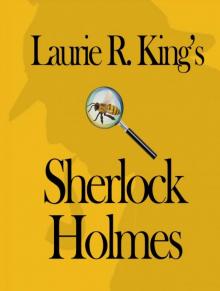 Laurie R. King's Sherlock Holmes
Laurie R. King's Sherlock Holmes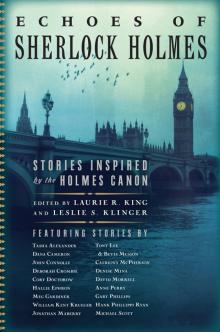 Echoes of Sherlock Holmes
Echoes of Sherlock Holmes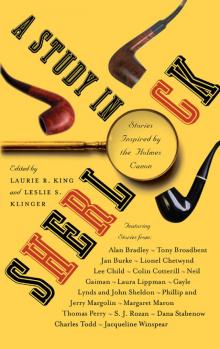 A Study in Sherlock
A Study in Sherlock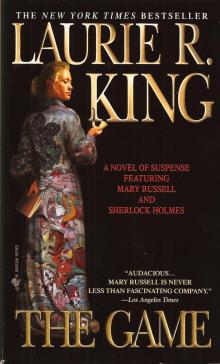 The Game mr-7
The Game mr-7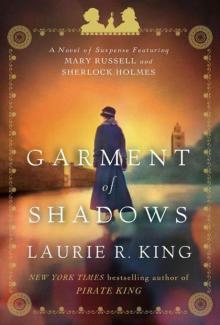 Garment of Shadows: A Novel of Suspense Featuring Mary Russell and Sherlock Holmes
Garment of Shadows: A Novel of Suspense Featuring Mary Russell and Sherlock Holmes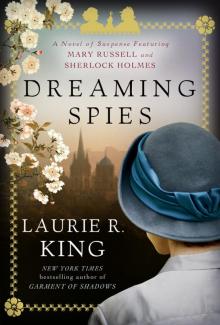 Dreaming Spies: A novel of suspense featuring Mary Russell and Sherlock Holmes
Dreaming Spies: A novel of suspense featuring Mary Russell and Sherlock Holmes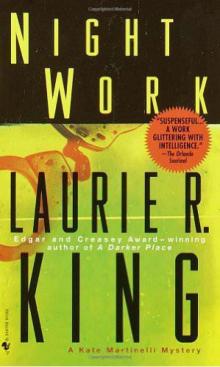 Night Work km-4
Night Work km-4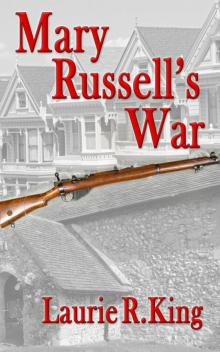 Mary Russell's War
Mary Russell's War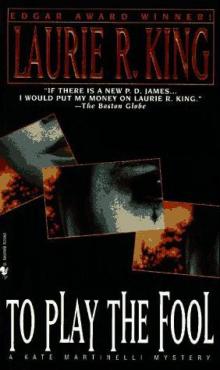 To Play the Fool km-2
To Play the Fool km-2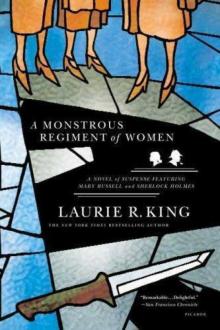 A Monstrous Regiment of Women mr-2
A Monstrous Regiment of Women mr-2 O Jerusalem mr-5
O Jerusalem mr-5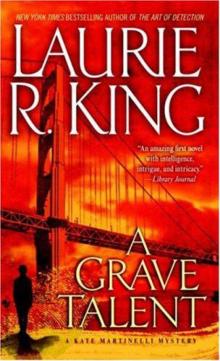 A Grave Talent km-1
A Grave Talent km-1